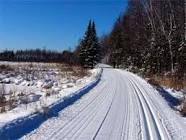overheard on our recent visit...
Well, Junior Rangers, we are just
winding up our study of the beautiful Carriage Roads here at Acadia National
Park. We have been hiking and biking and seeing each of the beautiful stone
bridges and Gatehouses. Remember there are well over 45 miles of roads… and
what are those large rocks at the edge of the roads called?
Mr.
Rockefeller’s Teeth..Giggles
That’s right little
Timmy, but I’m sure it was meant respectfully.
We are all very thankful to the Rockefellers for the gift of these roads
to our park.
Any other questions
from you Junior Rangers?
What
are those piles of sticks lying between the "teeth" way up on the high parts of
the Roads?
You mean the bushy ones with the
trimmed ends all piled neatly between the “teeth”? Well, that’s going to take a little
explaining…
You know, of
course, that Mr. Rockefeller took an active interest in designing and building
these roads. He was out with his
engineers and workmen picking just the right slopes for the horses and making
sure that the passengers got a good view of all the mountains, the waterfalls
and especially the lovely beaver ponds.
The roads pass close to the ponds at low altitudes and the vistas high
up the roads nearly always look down on a pond or stream.
Now as time went on
and the Acadia NP was formed, what do you think happened to the trees in front
of the scenic vista?
Chorus: THEY GREW..
Yes, indeed they
did grow. How quickly you recognized
that! The trees and brush grew and might
have obscured the vista. This happened
in other places managed by the Park Service …like the Blue Ridge Parkway and
Great Smoky Mountains National Park and others. There they couldn’t just trim
the bushes (now trees), they had to form an Intragovernmental Committee with
representatives from all over, and take public comments and Study..
And what were the trees
(now 80 years old) doing?
Chorus: GROWING! giggles,
Well, they did
finally cut the brush and trees back.
They got out the original drawings and marked the lines of sight and
prepared to cut the trees (which by now were huge and some quite attractive
themselves.) Contracts had to be let
because this was now a job way too large for a few park employees with a
brush hook. Objections were raised by
those who wanted the vistas to look “just like they always did” – a leafy green
wall apparently. One suggestion by a well-meaning “holistic environmentalist” to airlift the
largest trees out to Wyoming to provide shade for the wild horses that were
being “saved” was tabled for future study.
FORTUNATELY, we
didn’t have that problem here in Acadia because we have BULL BEAVERS.
What are Bull
Beavers you ask? Bull Beavers are just
regular beavers, but they are HUGE.

They
live in those well-appointed lodges you see along the carriage roads in the
lowlands.
 They have no enemies here, so
they grow large and somewhat indolent.
But in late summer, as the bike traffic on the carriage roads peaks, their
summer work begins. They must work at
night to avoid the bikes, but you can often see the drag marks their tails make
in the loose gravel as they climb the roads to the high places. There they trim the likely brush, usually
branches with a 1-2” diameter, about 6-12 feet long. (You can tell the work of a Bull Beaver
because this brush is cut in a single clean stroke, not those little baby
nibbles of lesser beavers.)
They have no enemies here, so
they grow large and somewhat indolent.
But in late summer, as the bike traffic on the carriage roads peaks, their
summer work begins. They must work at
night to avoid the bikes, but you can often see the drag marks their tails make
in the loose gravel as they climb the roads to the high places. There they trim the likely brush, usually
branches with a 1-2” diameter, about 6-12 feet long. (You can tell the work of a Bull Beaver
because this brush is cut in a single clean stroke, not those little baby
nibbles of lesser beavers.) After a hard nights work, they hide out in the little streams during the heat if the day. If you ever see a beaver high up in the hills, splashing in a pool, you’re a lucky ranger; few people ever sight them.
When this summer
work is complete and the brush neatly stacked, it’s easy to look down and see
the ponds far below. Then, all there is
to do is wait.
Come November the park is nearly empty, and the first
big snow falls. It is also the time of the full winter moon. It is now that all the little baby
beavers scamper up the carriage trails. (They may mess up the grooves that nice
volunteers “groom” for the cross country skiers. And the Park Service folks
will issue stern warnings to keep “horses and dogs” out of the grooves.)

Each baby beaver
grasps a long brushy bough between its front paws, climbs astride it with its
broad tail pressing down on the leaves and slides down the steep, clear vista
to the icy pond below. The ride is far superior to anything the cross
country skiers experience. It is
wonderful! And it provides both a break from midwinter “Lodge Fever” and a big
load of tasty snacks (since the Park Service” frowns on cutting too much brush
around the ponds).




No comments:
Post a Comment